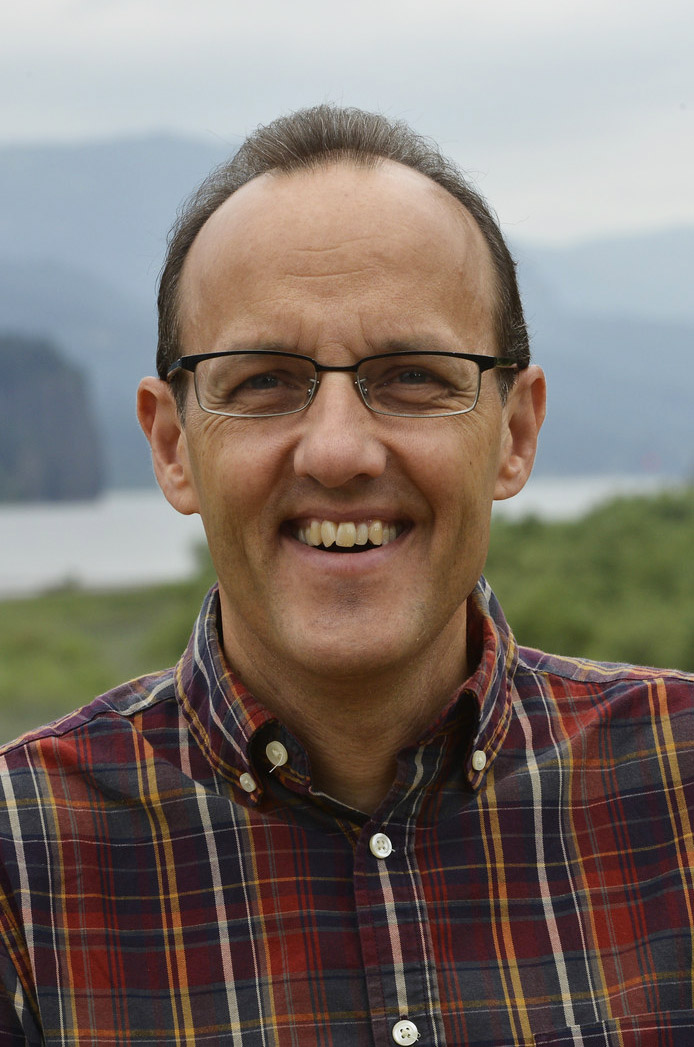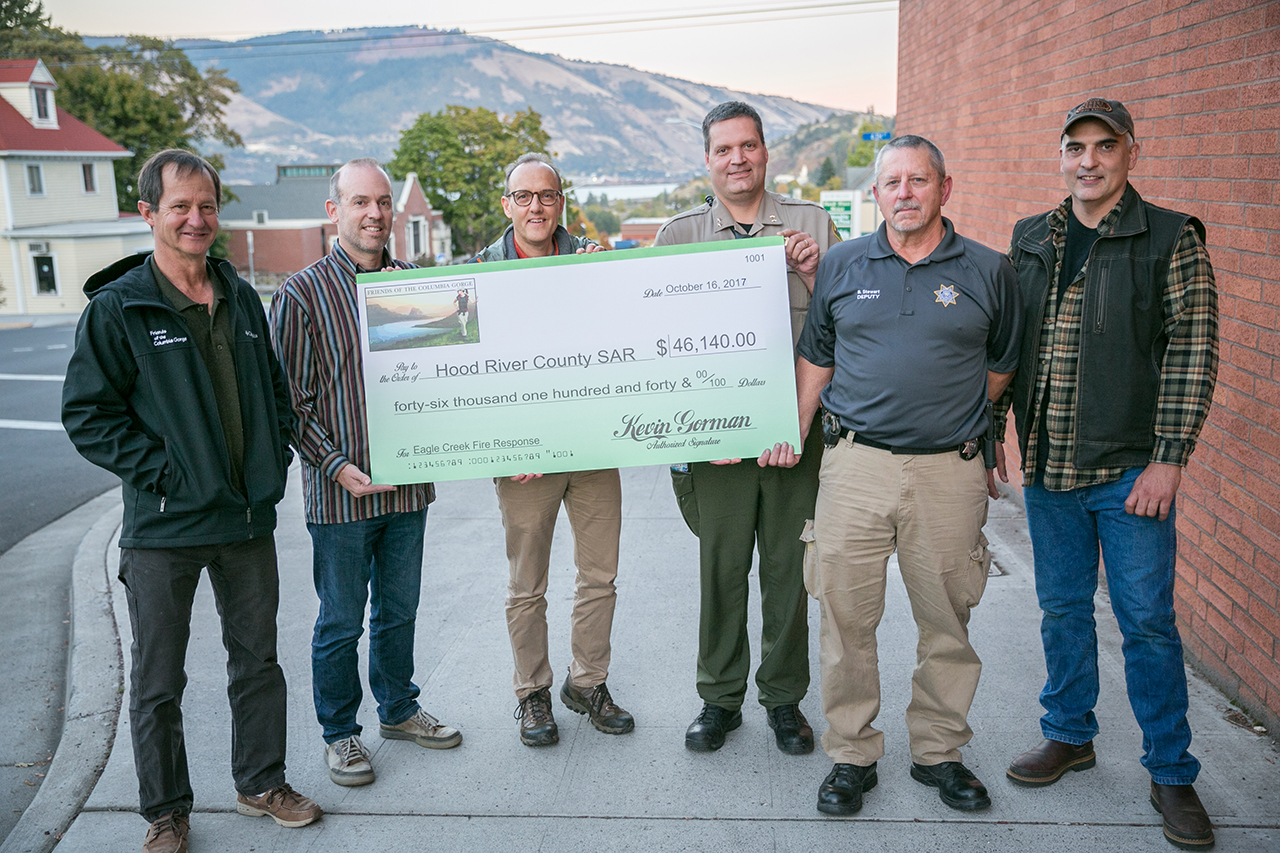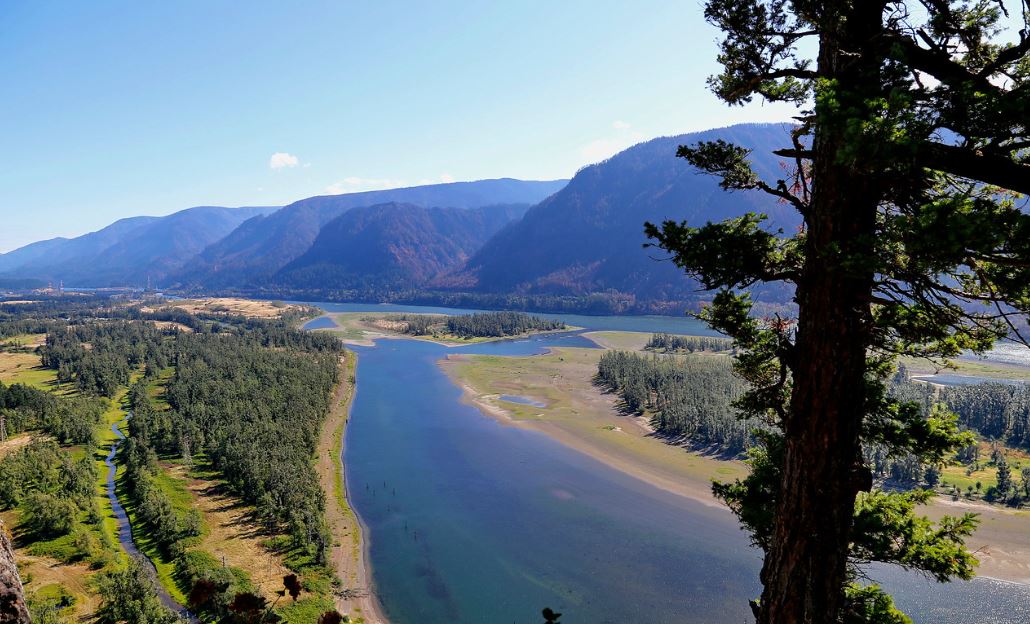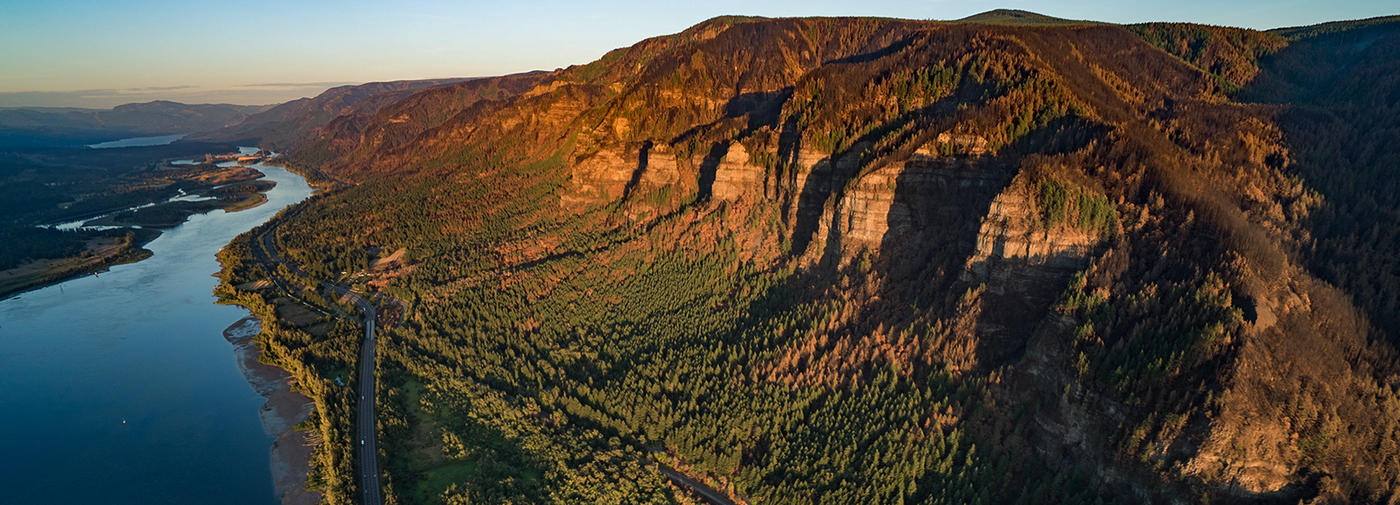 By Kevin Gorman
By Kevin Gorman
Executive Director
September 2 was a beautiful Saturday on Labor Day weekend, when the Columbia Gorge draws thousands of visitors for end-of-summer outings. This year, though, it was also the fateful day when the reckless use of firecrackers ignited flames in Eagle Creek canyon that quickly exploded into a massive wildfire. Within hours, more than 150 hikers were trapped by flames and had to be rescued after spending a cold, frightening night out near Tunnel Falls.
That was just the beginning.
Over the next few anxious days, fire roared through thousands of acres of tinder dry forests. The Interstate 84 freeway was closed for 40 miles and entire communities were evacuated. Thick brown smoke and ash covered the mountains and even choked the Portland metropolitan area.
Just three days after the fire began, a livestreaming camera across the Columbia River in Washington showed terrifying images of ridgelines ablaze, stretching west from the Eagle Creek drainage to Tanner Creek and beyond, to Bridal Veil. The entire western Gorge appeared to be on fire.
Early that morning, glued to our screens, we watched as firefighters threw everything they had at the blaze threatening Multnomah Falls Lodge. When the smoke cleared hours later, the lodge – coated with a thick layer of ash – had miraculously been saved. And something else unexpected showed up in the videos – green vegetation on the slopes above the lodge. The magnificent forest surrounding Multnomah Falls was badly burned, but not entirely charred.
Immediate responses

As the fire raged, people anxious to do something – anything – to help the Gorge reached out to Friends. On day two of the fire, we set up a donation page for the Hood River County Sheriff’s Office Search and Rescue Division, which had taken the lead in rescuing the hikers trapped at Eagle Creek.
More than 520 people donated over $46,000 through that page.
Like numerous businesses, Thunder Island Brewery in Cascade Locks had to shut down on their busiest weekend of the year, so they opened their doors and fed firefighters the food they had purchased for Labor Day weekend. Friends staff assisted the Thunder Island team as they expanded their efforts to launch a GoFundMe page that raised more than $23,000 for Gorge fire departments. The fight to save the Gorge captured national headlines, touching the hearts of countless people around the country. In just six days, Friends’ list of Facebook followers grew from 14,000 to nearly 30,000, and 1,600 volunteers signed up for our stewardship program. Together with
Trailkeepers of Oregon, a partner nonprofit group, we welcomed more than 4,000 new sign-ups ready to help rebuild burned trails. Our membership grew from 6,000 to 7,000 in one week, and more than 100 businesses, including the Portland Timbers and Thorns FC, held fundraisers for our organization.
Unfortunately, during that traumatic first week of the uncontained fire, Oregon Congressman Greg Walden turned his attention away from his hometown, which was under partial evacuation. Instead, he submitted rushed legislation in Congress to
allow logging in the fragile burned areas of the Gorge. Within a week, we learned that only 15 percent of those areas were even classified as “severely burned.”
The forest doesn’t need logging. This majestic national treasure has just survived a oncein-a-century wildfire typical of forests in the western Cascades. It needs to heal and self-repair.
Natural resilience
As the weeks went on, in meetings with local, state, and federal agencies, conservation and recreation groups, and Gorge economic development interests, one word kept coming up in discussions about the Gorge – resilience. Shaped by earthquakes, floods, fire, and wind, if the Columbia Gorge is anything, it is resilient. Out of those meetings and conversations, a Gorge Resilience Initiative is forming to restore and enhance the Columbia Gorge.
We have a chance to watch a healthy new forest emerge, and to rethink century-old recreation and transportation systems and advocate for a vision into the next century. And we have a chance to use this fire to cultivate a new land ethic for longtime residents, people new to the region, and our younger generations. We can ensure natural recovery of Gorge forests by opposing bad legislation, weighing in on restoration plans, and training volunteers for restoration work. We can relieve future crowding and congestion in the waterfall area by building trails on the Washington side and further east in Oregon.
We have an opportunity to reimagine the role of the Historic Columbia River Highway, where congestion has become common. We have a generational opportunity to get it right.
People and places
By focusing on the long term, we can ensure that the communities along the Columbia River will thrive for countless years into the future. We can't rush ahead planting trees and rebuilding trails right now. The land needs to heal, and we can educate, encourage patience, and nurture enthusiasm.
We will train volunteers so when the time is right, they can work with us wisely to restore and respect the Gorge’s environmental and community values. Our experiences have prepared us for this nexus of land, trails, and communities. Two current and former Friends staff members also serve on city councils in the Gorge, and we helped form the
Columbia Gorge Tourism Alliance. Six years ago, we launched
Gorge Towns to Trails to create a trail system that wraps around the Gorge and to ease congestion in the waterfall area.
Last spring, we publicly announced our
Preserve the Wonder land campaign, and we have raised 80 percent of our $5.5 million campaign goal. Four of the seven
Preserve the Wonder properties help make future trail connections possible. Protecting these lands is even more important now than when we launched the campaign.
Friends of the Columbia Gorge has worked for years to help close the gaps between conservation, recreation, and community vitality. Our members and thousands of others who love the Gorge have supported us this fall with words, deeds, and resources. By charting this exciting path into the future, we know the Columbia River Gorge will continue to be a crown jewel of the Pacific Northwest for generations to come.
 Forest Service fire incident page - Eagle Creek fire
Forest Service fire incident page - Eagle Creek fire
Photos from body of text:
1. Hood River County Deputy Chris Guertin, Sheriff Matt English and Reserve Deputy Bob Stewart with gift from Friends-led public appeal. (photographer: Blaine Franger)
2. The beauty of the post-fire Gorge is abundant in this view taken from the Beacon Rock trail. (photographer: Micheal Drewry)

 By Kevin Gorman
By Kevin Gorman
 As the fire raged, people anxious to do something – anything – to help the Gorge reached out to Friends. On day two of the fire, we set up a donation page for the Hood River County Sheriff’s Office Search and Rescue Division, which had taken the lead in rescuing the hikers trapped at Eagle Creek. More than 520 people donated over $46,000 through that page.
As the fire raged, people anxious to do something – anything – to help the Gorge reached out to Friends. On day two of the fire, we set up a donation page for the Hood River County Sheriff’s Office Search and Rescue Division, which had taken the lead in rescuing the hikers trapped at Eagle Creek. More than 520 people donated over $46,000 through that page.
